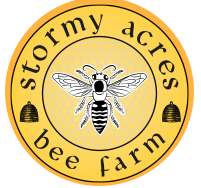HOW THE HONEY BEE WORKER DOES WHAT SHE DOES
The need for additional understanding, particularly by those who keep bees today, has grown along with the complexities involved in managing honey bee colonies. Apis mellifera is a well-studied bee. It is the species used for much of the world’s beekeeping. The honey bee worker does not begin life fully grown as you may see her in our bee yards and gardens. She has her start as an egg, and her development proceeds according to a sequence known as “complete metamorphosis.” This process includes four different stages of growth and maturation. Thus for the honey bees, development proceeds from the tiny, white, oval-shaped egg to a growing larvae, to a metamorphosing pupa, to the more familiar adult – worker bee. Worker development takes place in a small, six-sided cell of beeswax fashioned into what we call “comb.” In fact, all honey bees are reared from eggs laid in cells made of beeswax. Fertilized eggs develop into female bees (workers or queens), whereas eggs that are not fertilized develop into male bees (drones). That a worker can develop from a fertilized egg but lay only unfertilized eggs may sound confusing at the start. Yet, this makes sense when we take into account that the worker does not mate. During the time they are developing into adults, honey bees are known collectively as “brood.”

